Hydraulic pumps work to move hydraulic liquids from Point A to Point B within various types of systems. Most often, they are used as components of hydraulic systems. There, hydraulic systems convert the energy generated by pressurized fluids into usable mechanical energy. Hydraulic systems are in general members of the fluid power branch of power transmission. Hydraulic pumps are also members of the hydraulic power pack/hydraulic power unit family. Hydraulic units are encased mechanical systems that use liquids for hydraulics. Read More…
Here at Metro Hydraulic Jack Co. we manufacture hydraulic solutions for a number of markets including: agricultural, municipal, construction, mining and transportation. Our company has an extensive history of engineering success. If you are unsure what hydraulic products are best for your task then just let one of our representatives know your application and we can handle the rest!

Established in 1972, Hyseco specializes in hydraulic & fluid power products. We provide numerous products including hydraulic pumps, cylinders, motors and power units. Our field service operates 24/7 and serves all industries. Visit our website for more information regarding our products as well as the capabilities we offer. Thank you for considering Hyseco.
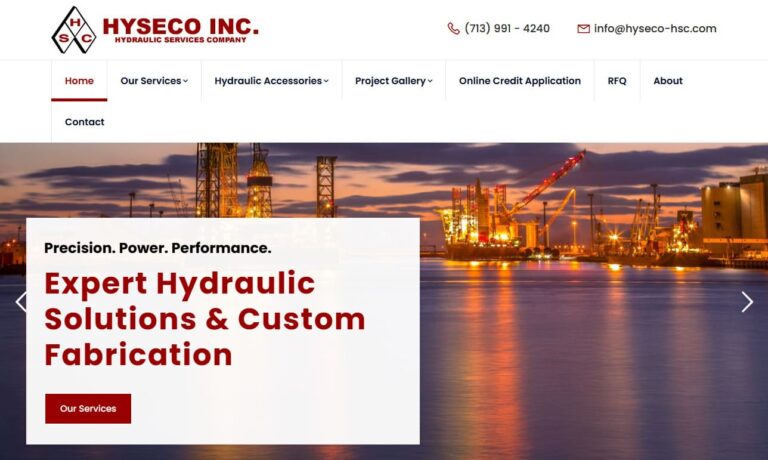
Hader Industries is a manufacturer of hydraulic components. We custom-engineer hydraulic cylinders, valves and accumulators for mobile equipment. We have been servicing various industries for over 70 years. If you have any questions about our products or services then please give us a call today to learn more!
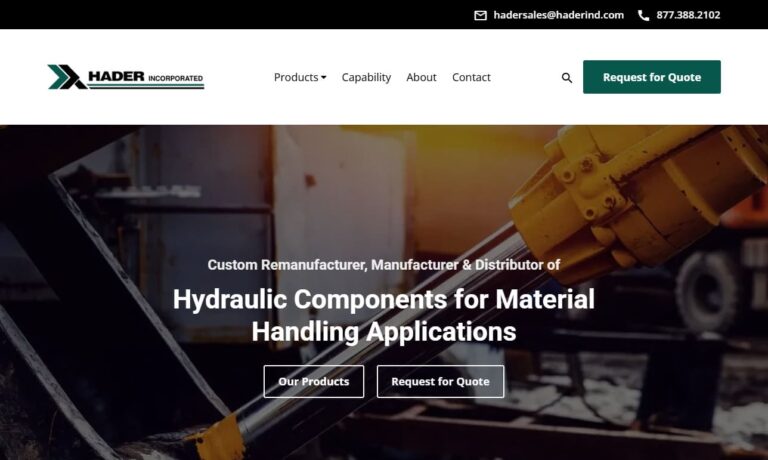
At International Fluid Power of America, we take pride in delivering hydraulic solutions that keep industries moving with strength and precision. Our expertise centers on hydraulic pumps, which we design, supply, and support to ensure optimal performance in demanding applications.
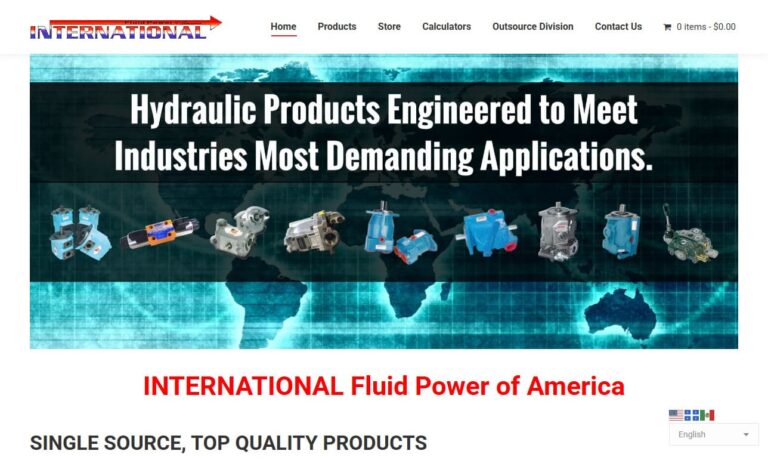
More Hydraulic Pumps Manufacturers
Hydraulic pumps are the cornerstone of fluid power systems and play a vital role in powering mechanical operations across a wide spectrum of industries. From agriculture and automotive manufacturing to defense, excavation, oil and gas production, and industrial automation, these energy-efficient components convert mechanical energy into hydraulic energy, enabling the precise control and transfer of fluids under pressure. Hydraulic pump applications are incredibly diverse, supporting airplane flaps, elevators, cranes, automotive lifts, shock absorbers, brakes, garage jacks, off-highway equipment, log splitters, offshore drilling platforms, injection molding machines, and hydraulic motors.
Materials for Hydraulic Pumps
For optimal performance, hydraulic pumps are engineered from high-quality, robust materials that ensure longevity and reliability even in demanding environments. Stainless steel is favored for critical internal components because of its exceptional strength and corrosion resistance, making it suitable for environments exposed to moisture, chemicals, or extreme temperatures. Cast iron is a popular choice for pump housings due to its affordability, machinability, and excellent vibration-damping properties, which contribute to quieter operation and extended service life. Alloy materials such as bronze and brass are often used for bearings and bushings, where their low friction and wear resistance help maintain smooth performance and reduce maintenance intervals. The careful selection of materials is crucial for hydraulic pumps intended for heavy-duty, continuous-use settings such as construction, mining, marine engineering, and manufacturing plants, where equipment downtime can be costly. For specialized applications, manufacturers may also incorporate advanced composites, high-strength plastics, or ceramic coatings to further enhance corrosion resistance, reduce weight, or increase thermal stability.
Designing Hydraulic Pumps
The hydraulic pump design process is a critical phase that determines the efficiency, suitability, and durability of the final product. Manufacturers start by asking key questions:
- What is the required flow rate and operating pressure? Determining the necessary fluid flow (measured in gallons per minute or liters per minute) and maximum system pressure (psi or bar) is fundamental in sizing the pump correctly for the application.
- What are the horsepower and speed requirements? The power source (electric motor, diesel engine, etc.) must match the pump’s load and speed specifications to ensure maximum efficiency and reliability.
- Will the pump require special features? Some systems benefit from advanced features such as pressure and discharge sensors, integrated control systems, or variable displacement mechanisms for energy savings and precise control.
- What is the operational environment? Environmental considerations include ambient temperature, potential exposure to dust, chemicals, or moisture, and available space. These factors influence choices like pump weight, rod extension, cylinder diameter, overall length, and power source compatibility (AC, DC, pneumatic, or manual).
- What type of hydraulic fluid will be used? The nature of the working fluid—be it mineral oil, synthetic esters, water-glycol solutions, or fire-resistant fluids—affects sealing materials, internal coatings, and compatibility with additives such as corrosion inhibitors, anti-wear agents, and thermal stabilizers. Manufacturers may recommend specific hydraulic fluid types to optimize pump performance and service life, especially if the system will encounter extreme temperatures or corrosive substances.
By addressing these considerations, manufacturers can design custom hydraulic pumps that precisely match application needs, whether for heavy machinery, mobile equipment, or specialized industrial processes. This tailored approach maximizes efficiency, minimizes downtime, and supports long-term reliability.
Features of Hydraulic Pumps
Modern hydraulic pumps are sophisticated assemblies designed for rugged use, precise performance, and ease of integration into larger hydraulic systems. A typical hydraulic pump system includes the following key components:
- Reservoir: Serves as a storage tank for hydraulic fluid, helping maintain consistent fluid levels, dissipate heat, and prevent aeration, which can degrade system performance and cause cavitation.
- Hydraulic hoses or tubes: Robust conduits that transport fluid between the reservoir, pump, valves, and actuators. These must be flexible, pressure-rated, and resistant to leaks or burst failures.
- Hydraulic cylinders: These actuators convert hydraulic energy into linear motion, powering everything from industrial presses to construction excavators.
- Hydraulic valves: Critical for regulating fluid flow, pressure, and direction. Options include pressure relief valves, directional control valves, and flow control valves, each supporting different control strategies and automation requirements.
- Pistons and gears: The heart of the pump mechanism—piston pumps use reciprocating pistons to build pressure, while gear pumps employ interlocking gears to displace fluid.
Efficient operation depends on the tight coordination and quality of these components. For example, the intake check valve prevents backflow and ensures the pump draws fluid correctly during the suction stroke. The discharge check valve ensures pressurized fluid is delivered to the actuator without reverse leakage, protecting both the pump and downstream components.
High-performance hydraulic pumps often include additional features such as integrated filtration systems, anti-cavitation valves, and pressure compensators, all of which contribute to extended service life, reduced maintenance, and greater system stability.
How Hydraulic Pumps Work
The fundamental operating principle behind all hydraulic pumps is Pascal’s Law, which states that a pressure change at any point in a confined incompressible fluid is transmitted undiminished throughout the fluid. This law underpins the efficiency and reliability of hydraulic systems, enabling them to transmit force and control movement precisely.
Here’s an overview of a typical hydraulic pump cycle:
- During the suction stroke, the pump’s piston or gears create a partial vacuum, drawing hydraulic fluid from the reservoir through the intake check valve.
- The compression stroke follows as the piston advances or gears mesh, pressurizing the fluid within the pump chamber.
- Once system pressure reaches the required threshold, the discharge check valve opens, allowing pressurized fluid to flow to the actuator (e.g., hydraulic cylinder or motor).
- This pressurized fluid exerts force on the actuator, producing mechanical work such as lifting, pushing, or rotating a load.
- The cycle repeats, enabling continuous or pulsed operation as dictated by the application.
Advanced hydraulic pumps may include variable displacement mechanisms that adjust the volume of fluid delivered per cycle, supporting energy-saving operation and precise motion control in industrial automation and robotics.
Types of Hydraulic Pumps
Understanding the various hydraulic pump types is essential for selecting the right solution for your application. Hydraulic pumps are classified by their mechanical design, operating principle, and intended use. Broadly, they are divided into single action or double action types:
- Single action hydraulic pumps provide force in only one direction, making them suitable for basic lifting, pressing, or pulling operations.
- Double action hydraulic pumps deliver power in both directions, enabling more complex motion and higher operational flexibility, such as in hydraulic presses or automated machinery.
Within these categories, the most common hydraulic pump designs include:
- Piston pumps: These positive displacement pumps use reciprocating pistons to generate high pressure and flow. They are subdivided into:
- Radial piston pumps: Feature pistons arranged perpendicular to a central shaft, delivering small flow rates at very high pressures. Ideal for applications like forging presses, plastic injection molding, and high-pressure hydraulic power units.
- Axial piston pumps: Utilize pistons aligned parallel to the drive shaft, offering a balance of simplicity, compactness, and cost-effectiveness. They are the go-to choice for mobile machinery, construction equipment, and machine tools.
- Gear pumps: Also known as hydraulic gear pumps, these employ the meshing of gears to move fluid. They are categorized as:
- External gear pumps: Consist of two identical gears rotating in opposite directions. Fluid enters the pump, is trapped between the gear teeth and the casing, and is forced out under pressure. External gear pumps are commonly used in industrial machines, material handling, and lubrication systems.
- Internal gear pumps: Feature a bi-rotational design with an external rotor and an internal idler gear. These pumps are highly versatile and can handle a wide range of fluids, including viscous materials like oils, adhesives, and even food products such as chocolate. Internal gear pumps are valued in the chemical processing, food and beverage, and oil and gas sectors.
- Rotary vane pumps: Positive-displacement pumps known for their efficiency and adjustable output. They are not suited for extremely high-pressure applications but offer reliable, smooth flow for low-to-medium pressure systems.
- Centrifugal pumps: Rely on rotating impellers to impart hydrodynamic energy to fluids. Centrifugal pumps are ideal for moving large volumes of low-viscosity fluids, making them common in water treatment, sewage handling, and process industries.
- Electric hydraulic pumps: Combine electric motors with hydraulic mechanisms, offering precise, automated fluid movement. These are prevalent in fixed industrial setups, such as factory automation, metalworking, and robotics.
- Hydraulic clutch pumps: Specialized pumps designed for engaging and disengaging clutch systems in vehicles and industrial machinery, providing controlled force for smooth operation.
- Plunger pumps: Use plungers to displace fluid, providing a durable alternative to piston pumps, especially in high-pressure applications like hydraulic testing and water jetting.
- Hydraulic ram pumps: Utilize the energy of flowing water to pump a portion of the input water to a higher elevation. These are invaluable in off-grid irrigation, rural water supply, and remote site applications where traditional power sources are unavailable.
- Hydraulic water pumps: A broad category encompassing all pumps designed for transferring water using hydraulic power, common in agriculture, firefighting, and flood control.
- Portable 12V hydraulic pumps: Battery-powered, compact, and highly mobile, these pumps are ideal for emergency rescue, field repairs, and portable hydraulic tool operation.
- Hydraulic hand pumps: Operated manually, these are indispensable for maintenance, mobile, or backup applications where electricity or compressed air is unavailable.
- Air hydraulic pumps: Utilize air compressors to generate hydraulic force, providing energy efficiency and safety for use in hazardous or explosive environments.
Choosing the right hydraulic pump type involves evaluating not just flow and pressure requirements, but also factors like energy efficiency, ease of maintenance, duty cycle, compatibility with existing systems, and total cost of ownership. For help navigating pump selection, consider questions such as: What is the expected operating environment? What duty cycle and load profile will the pump experience? Are energy savings or low noise operation a priority? Is portability or stationary installation required? Answering these questions ensures you select a hydraulic pump matched to your technical and commercial needs.
Hydraulic Pump Applications and Use Cases
Hydraulic pumps deliver unparalleled versatility and power, enabling a vast range of industrial and commercial applications. Here are some of the most common hydraulic pump use cases and industry applications:
- Construction and heavy equipment: Excavators, bulldozers, backhoes, loaders, and cranes rely on hydraulic pumps for lifting, digging, and moving heavy loads with precision.
- Agriculture: Tractors, combine harvesters, sprayers, and balers use hydraulic pumps to power implements, control steering, and operate attachments.
- Automotive and transportation: Hydraulic pumps are integral to power steering, braking systems, automotive lifts, and car manufacturing robots.
- Manufacturing and automation: Presses, stamping machines, plastic injection molding, metal forming, and robotic arms all utilize hydraulic pumps for controlled, high-force movements.
- Aerospace and defense: Aircraft landing gear, flight control surfaces, and weapon systems use hydraulics for smooth, reliable actuation under high loads.
- Marine and offshore: Winches, steering mechanisms, and deck equipment on ships and oil rigs depend on hydraulic pumps for reliable performance in harsh environments.
- Material handling: Forklifts, conveyors, and automated storage systems employ hydraulic pumps for lifting and precise positioning of goods.
- Energy sector: Hydraulic pumps power drilling rigs, hydraulic fracturing units, and wind turbines, providing critical control and actuation.
- Utilities and municipal services: Water treatment, waste management, sewage handling, and municipal vehicle systems use hydraulic pumps for reliable fluid control and movement.
Are you searching for the best hydraulic pump for a specific application? Explore our detailed guides on hydraulic pump selection for your industry needs or contact our experts for customized recommendations.
Advantages of Hydraulic Pumps
When comparing hydraulic pumps to other fluid power and motion control systems—such as electric motors, pneumatic systems, and mechanical drive systems—several clear advantages emerge:
- High power density: Hydraulic pumps transmit large amounts of force in compact packages, making them ideal for mobile and space-constrained applications.
- Precise control: Smooth, proportional movement is achievable with hydraulic valves and actuators, supporting automation and delicate positioning tasks.
- Continuous, sustained force: Unlike pneumatic systems, hydraulics maintain pressure and force without the need for constant airflow, making them superior for tasks like pressing, clamping, and lifting heavy objects.
- Versatility: Hydraulic pumps are compatible with a wide array of fluids and can operate in nearly any environment, from deep-sea drilling to aerospace.
- Energy efficiency: Advanced variable-displacement and load-sensing pumps reduce energy consumption, heat generation, and operating costs in modern hydraulic systems.
- Adaptability to automation: Hydraulic pumps integrate seamlessly into automated production lines, offering remote control, rapid response, and integration with electronic sensors and controllers.
Proper Care and Maintenance for Hydraulic Pumps
To maximize the service life and performance of your hydraulic pump, regular maintenance is essential. Best practices include:
- Monitor hydraulic fluid levels: Keep fluid at recommended levels to prevent cavitation and overheating.
- Inspect for leaks: Regularly check hoses, fittings, and seals for signs of hydraulic oil leakage, which can reduce pressure and contaminate the environment.
- Replace hydraulic fluid and filters: Change fluid and filters according to manufacturer guidelines to prevent contamination, which can cause premature wear and failure.
- Check pressure and temperature: Ensure system pressure and temperature remain within specified ranges to avoid damaging internal components.
- Inspect moving parts: Examine pistons, gears, and valves for wear, corrosion, or damage.
- Follow preventive maintenance schedules: Adhering to recommended service intervals reduces the risk of unexpected downtime and costly repairs.
Failing to maintain your hydraulic pump can result in fluid contamination, increased friction, loss of efficiency, equipment failure, and even hazardous leaks. A well-maintained hydraulic system delivers:
- Early detection and correction of minor problems
- Reduced downtime and repair costs
- Improved performance and energy efficiency
- Longer equipment lifespan and protection of your investment
- Enhanced safety and reliability for operators and bystanders
Standards and Certifications for Hydraulic Pumps
Compliance with international standards is fundamental to the design, manufacture, and operation of hydraulic pumps. Leading standardization organizations include:
- International Organization for Standardization (ISO): Sets global specifications for hydraulic pump design, testing, and safety, such as ISO 4412 (noise measurement) and ISO 6743 (fluid compatibility).
- American National Standards Institute (ANSI): Provides guidelines for pump performance, pressure ratings, and construction.
- European Committee for Standardization (CEN): Establishes harmonized standards for hydraulic systems in the European Union, contributing to product safety and market access.
- National Fluid Power Association (NFPA): Offers comprehensive standards for hydraulic pump performance, installation, and maintenance in North America.
Ensuring your hydraulic pump meets these standards guarantees:
- Consistent quality and performance across manufacturers
- Safe operation and reduced risk of accidents or failures
- Compliance with local and international regulations
- Ease of integration with other hydraulic system components
- Reliable documentation for maintenance and troubleshooting
Using non-compliant pumps can result in unsafe operation, premature failure, and higher long-term costs. Always verify certifications and request documentation from your hydraulic pump supplier.
Purchasing Hydraulic Pumps: Key Decision Factors
Choosing the right hydraulic pump manufacturer or supplier is a crucial decision with significant operational and financial implications. Here are the top factors to consider when evaluating hydraulic pump suppliers:
- Reputation and track record: Work with manufacturers known for quality, reliability, and after-sales support. Look for customer reviews, industry awards, and references.
- Technical expertise: Choose suppliers with deep experience in your industry and the ability to provide engineering support, customization, or integration services.
- Product range and availability: Select companies offering a broad selection of hydraulic pump types, sizes, and configurations to ensure you find a perfect match for your needs.
- Certifications and compliance: Ensure the supplier’s products meet all required international and local standards for quality and safety.
- Lead times and delivery: Reliable inventory and on-time delivery are critical for production continuity, especially when replacing pumps in mission-critical systems.
- Cost of ownership: Consider not just the initial purchase price, but also maintenance needs, spare parts availability, and energy efficiency over the pump’s lifetime.
For best results, follow these steps:
- Define your technical and commercial requirements—including required flow rate, pressure, installation environment, project timeline, and budget.
- Use our curated list of top hydraulic pump manufacturers to find suppliers with a proven track record.
- Contact three or four manufacturers, sharing your specifications and application details.
- Request quotes, technical data sheets, and sample performance curves for comparison.
- Evaluate responses, considering product suitability, lead times, after-sales support, and total cost of ownership.
- Select the supplier that best aligns with your operational goals and initiate the procurement process with confidence.
Still have questions about how to choose the right hydraulic pump? Connect with our experts for personalized guidance and technical support.
What are hydraulic pumps used for?
Hydraulic pumps are key components in fluid power systems that convert mechanical energy into hydraulic energy, enabling the precise movement and control of fluids. They are used in diverse industries such as agriculture, automotive manufacturing, defense, construction, oil and gas production, and industrial automation to power equipment like airplane flaps, elevators, cranes, automotive lifts, and injection molding machines.
What materials are commonly used to manufacture hydraulic pumps?
Hydraulic pumps are typically made from robust materials such as stainless steel for internal components due to its strength and corrosion resistance, cast iron for housings due to its machinability and vibration-damping properties, and alloys like bronze and brass for bearings and bushings. Advanced composites, high-strength plastics, and ceramic coatings may also be used for specialized applications requiring enhanced durability or corrosion resistance.
What are the main types of hydraulic pumps?
The main types include piston pumps (radial and axial), gear pumps (external and internal), rotary vane pumps, centrifugal pumps, electric hydraulic pumps, hydraulic clutch pumps, plunger pumps, hydraulic ram pumps, hydraulic water pumps, portable 12V hydraulic pumps, hydraulic hand pumps, and air hydraulic pumps. Each type is suited to particular applications depending on flow, pressure, and operational requirements.
How do hydraulic pumps work?
Hydraulic pumps operate on Pascal’s Law, which states that pressure changes in a confined fluid are transmitted equally throughout. A pump creates a vacuum to draw fluid in during the suction stroke, pressurizes the fluid in the chamber during compression, and then sends it to actuators (like cylinders or motors) to perform work. This cycle repeats for continuous or pulsed operation, enabling precise force and movement in machinery.
What are key features and components of a hydraulic pump system?
A hydraulic pump system usually includes a reservoir for fluid storage, hydraulic hoses or tubes for fluid transport, hydraulic cylinders for converting energy into motion, valves for controlling flow and pressure, and pistons or gears for generating the required pressure. Advanced systems may feature integrated filtration, anti-cavitation valves, and pressure compensators to enhance performance and reliability.
What standards and certifications should hydraulic pumps meet?
Hydraulic pumps should comply with international standards like ISO (for noise, fluid compatibility, and safety), ANSI (for performance and pressure ratings), CEN (for EU safety), and NFPA (for North American standards). Meeting these standards ensures consistent quality, safe operation, regulatory compliance, and ease of system integration.
How should hydraulic pumps be maintained for long service life?
Regular maintenance practices include monitoring fluid levels, checking for leaks, replacing hydraulic fluid and filters as recommended, keeping pressure and temperature within specified ranges, inspecting moving parts for wear or damage, and following preventive maintenance schedules. Proper care prevents contamination, reduces downtime, extends equipment life, and ensures safe reliable operation.
What factors should I consider when purchasing a hydraulic pump?
Key considerations include the supplier’s reputation, technical expertise, product range, compliance with standards, inventory and delivery reliability, and total cost of ownership. Define your requirements carefully, compare options from multiple manufacturers, and evaluate based on performance data, lead times, after-sales support, and overall suitability for your application.


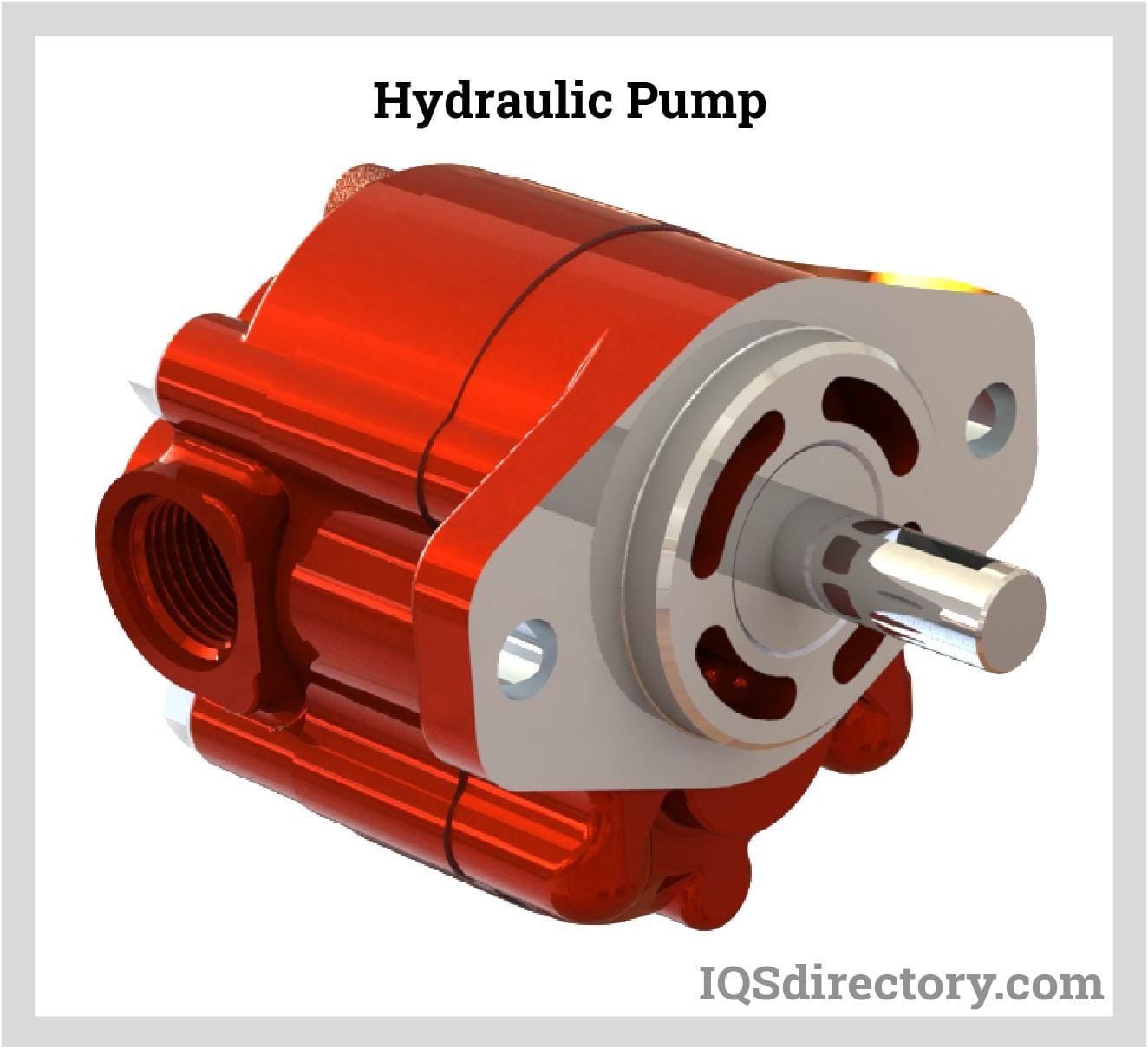
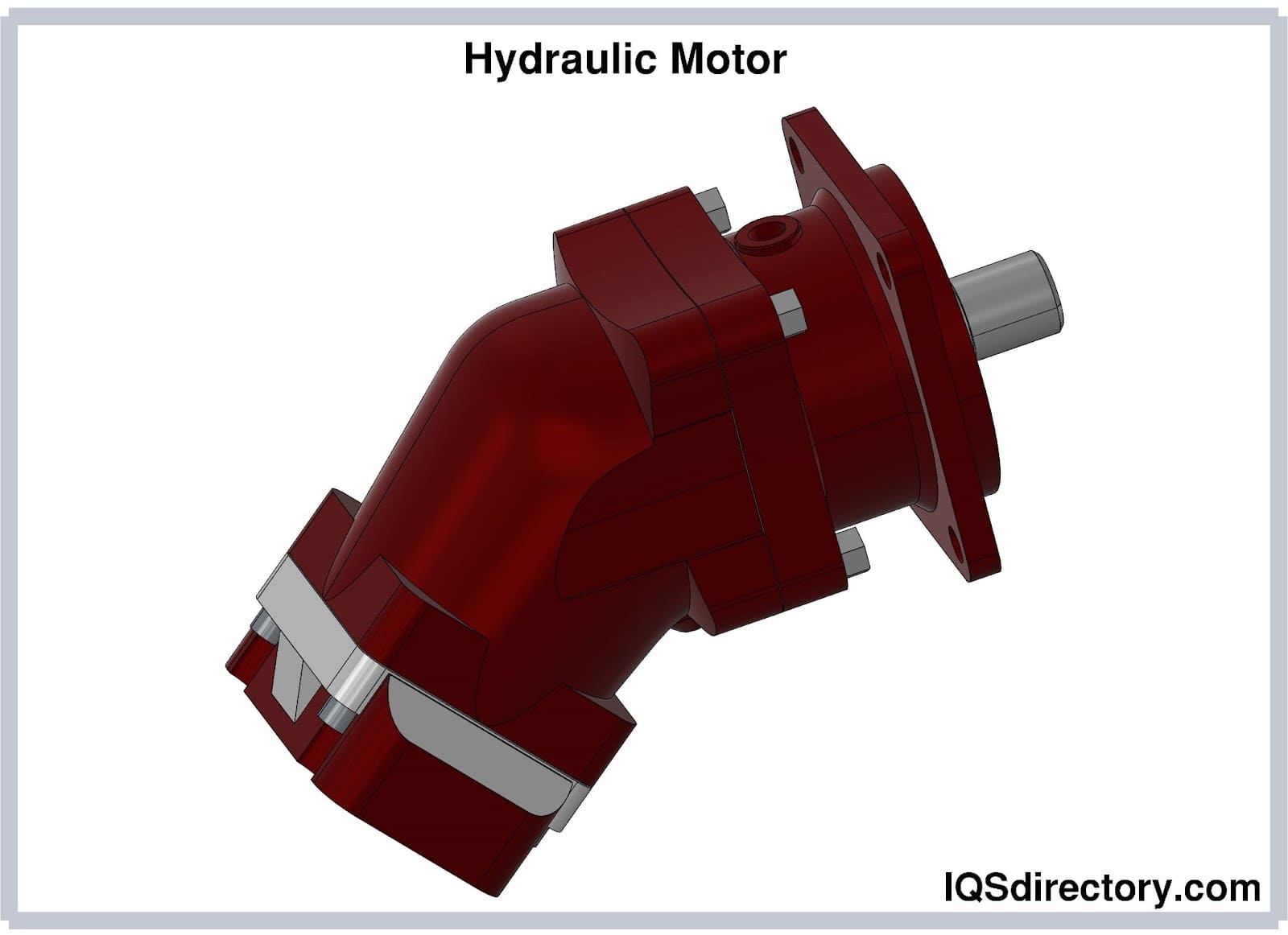
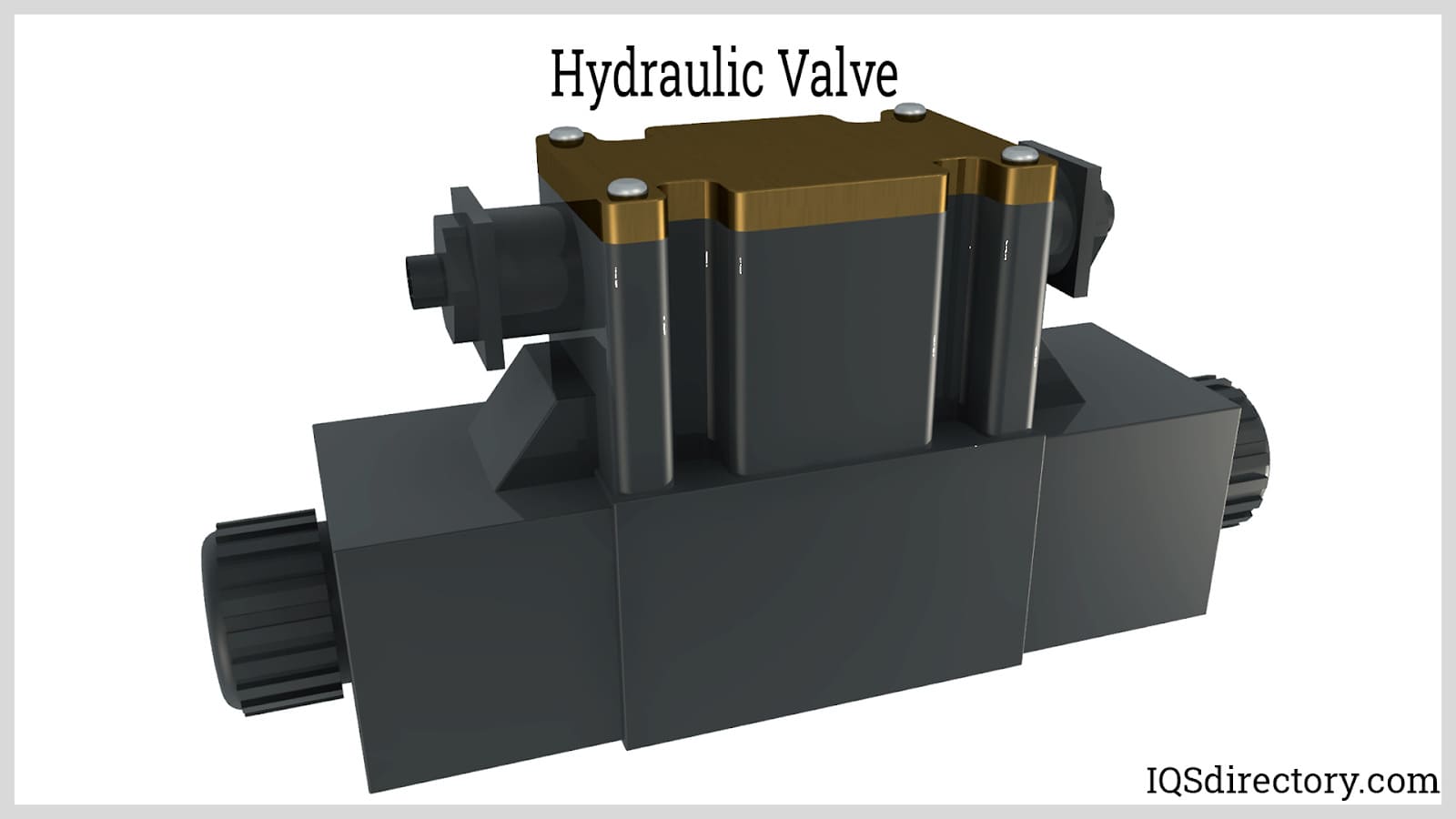
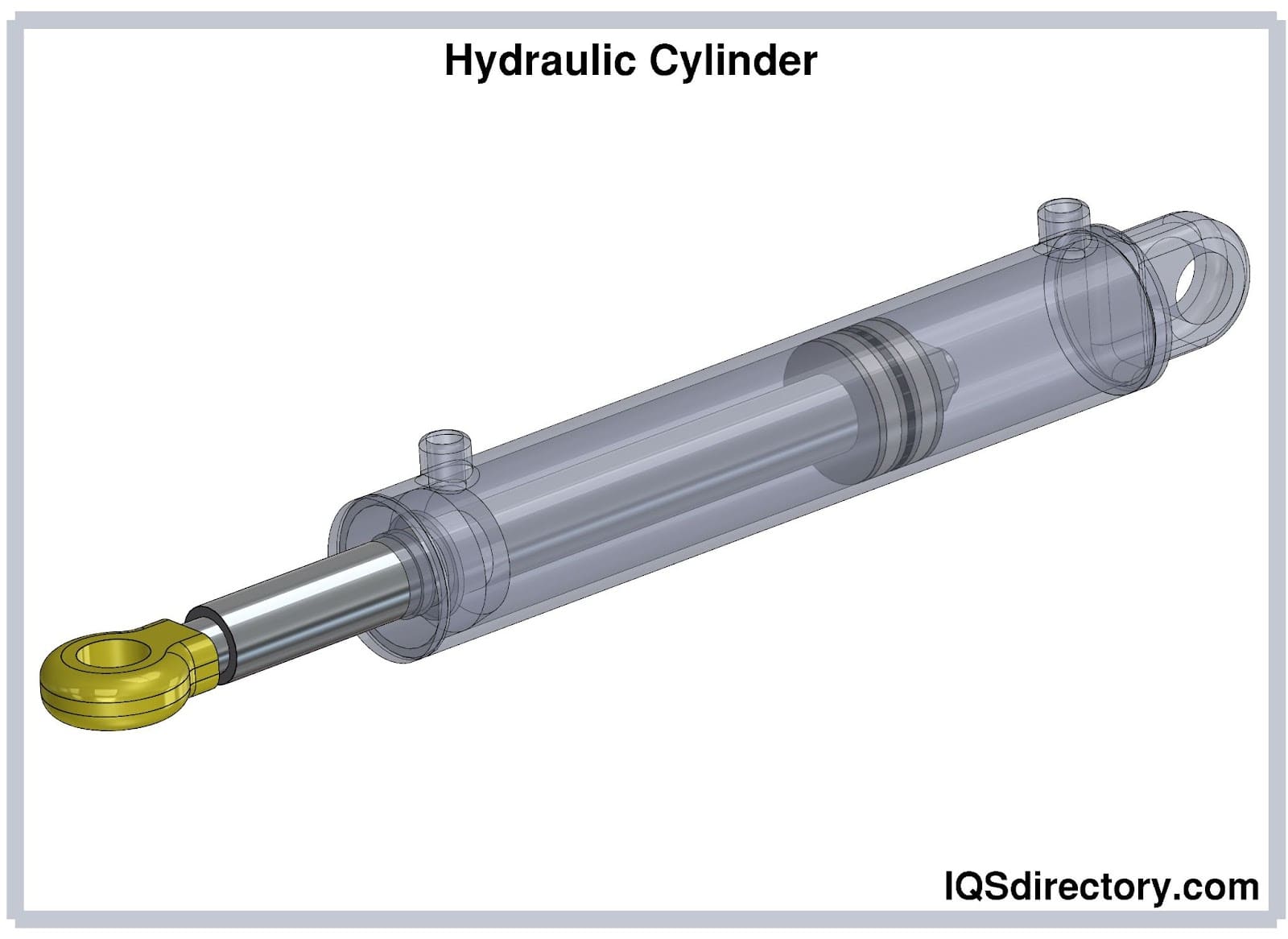
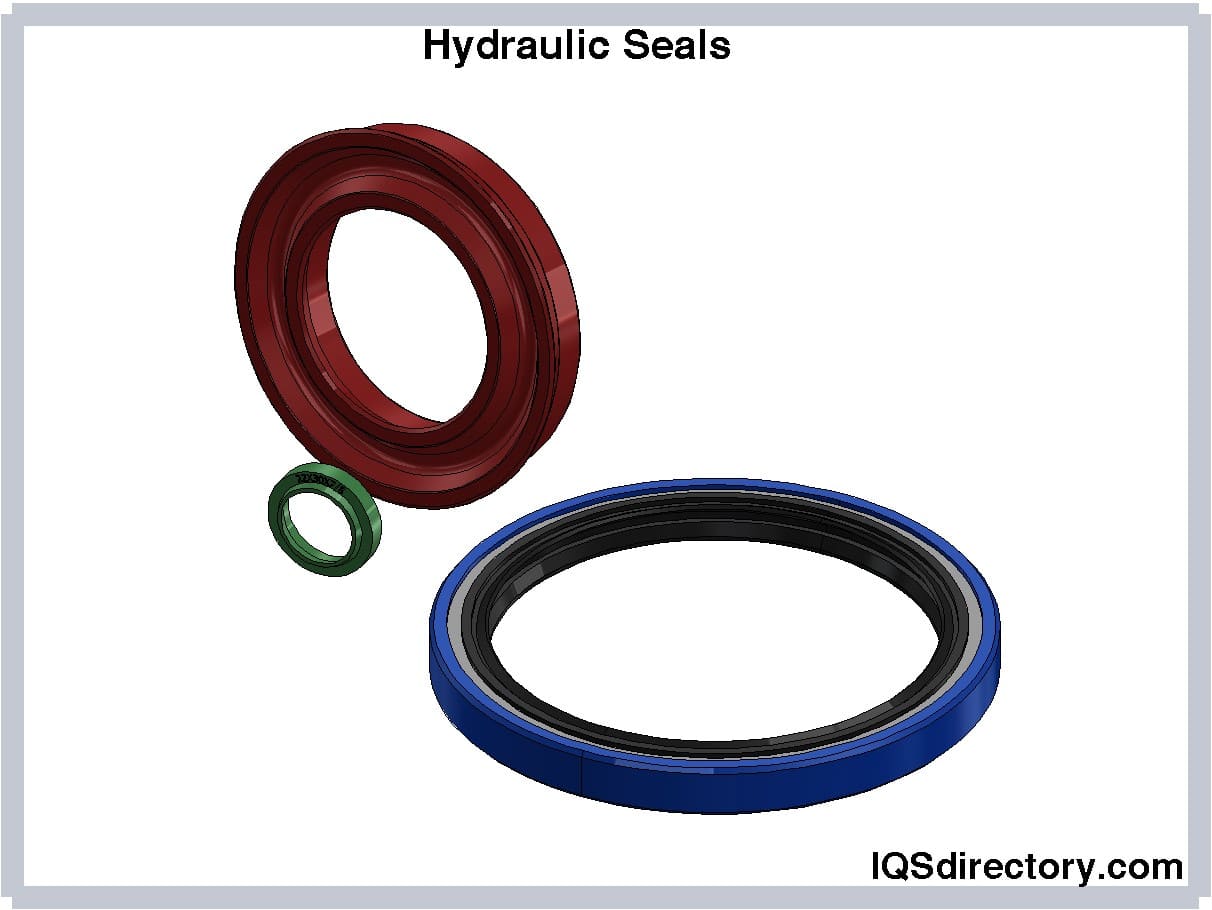
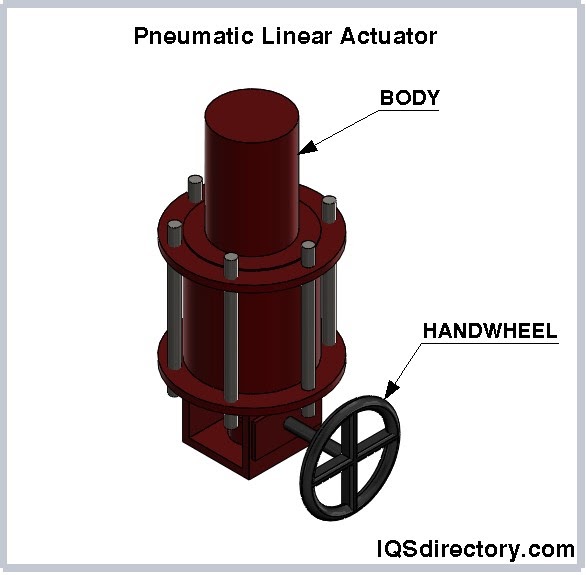
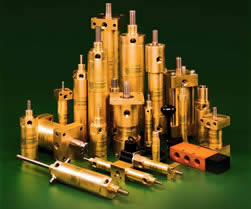 Hydraulic Cylinders
Hydraulic Cylinders Hydraulic Lifts
Hydraulic Lifts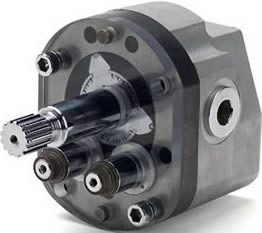 Hydraulic Motors
Hydraulic Motors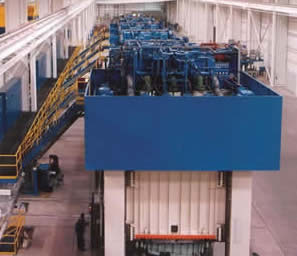 Hydraulic Presses
Hydraulic Presses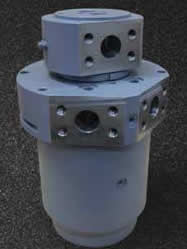 Hydraulic Pumps
Hydraulic Pumps Hydraulic Seals
Hydraulic Seals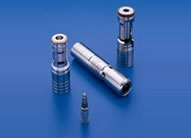 Hydraulic Valves
Hydraulic Valves Castings & Forgings
Castings & Forgings Bulk Material Handling
Bulk Material Handling Electrical & Electronic Components
Electrical & Electronic Components Flow Instrumentation
Flow Instrumentation Hardware
Hardware Material Handling Equipment
Material Handling Equipment Metal Cutting Services
Metal Cutting Services Metal Forming Services
Metal Forming Services Metal Suppliers
Metal Suppliers Motion Control Products
Motion Control Products Plant & Facility Equipment
Plant & Facility Equipment Plant & Facility Supplies
Plant & Facility Supplies Plastic Molding Processes
Plastic Molding Processes Pumps & Valves
Pumps & Valves Recycling Equipment
Recycling Equipment Rubber Products & Services
Rubber Products & Services